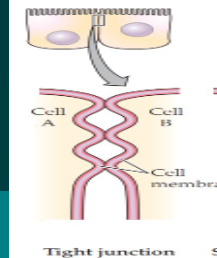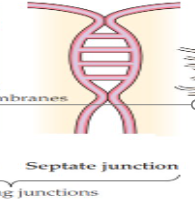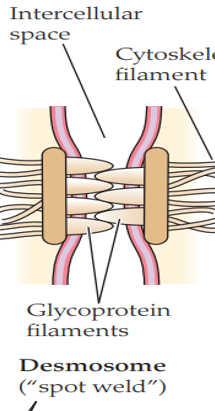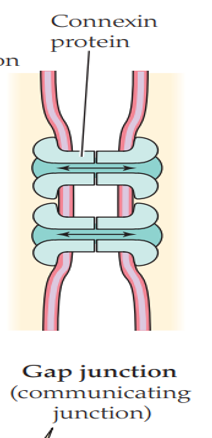Molecules and Cells in Animal Physiology
1/56
Earn XP
Description and Tags
GENPHYSIO
Name | Mastery | Learn | Test | Matching | Spaced |
|---|
No study sessions yet.
57 Terms
Cell membrane (plasma membrane)
Each cell is enclosed in this membrane
Intracellular membranes (subcellular membranes)
This includes the endoplasmic reticulum, the inner and outer membranes of each mitochondrion, and the two closely associated membranes that form the nuclear envelope.
Bilayer (double layer) of phospholipid molecules
The cell membrane is ordinarily composed primarily of this, in which protein molecules are embedded
Phospholipases
An enzyme found in snakes such as puff adder or rattlesnake which break up phospholipids
Distribution of electrons
A property that determines whether the molecule is polar or nonpolar.
Polar Molecule
Electrons here are unevenly distributed; thus some regions are relatively negative, whereas others are relatively positive.
Nonpolar Molecule
Electrons here are evenly distributed and there are no charge imbalances between different molecular regions
Phospholipids
contain phosphate groups.
the principal constituents of the matrix in which proteins are embedded in cell membranes and intracellular membranes.
Amphipathic
This term means each molecule consists of a polar part and a nonpolar part
Two layers of phospholipid molecules
Known as the two leaflets of the membrane, typically are composed of different mixes of phospholipid molecules.
Fluid
The phospholipids in a cell membrane or intracellular membrane are in this state
Fluidity
The ease of motion of the phospholipid molecules in a membrane leaflet.
also depends in part on the degree of chemical saturation of the hydrocarbons that make up the phospholipid tails.
Saturated
A hydrocarbon if it contains no double bonds
Unsaturated
A hydrocarborn if it includes one or more double bonds
Bent tails of membrane phospholipids
Prevent tight, crystal-like packing of the tails in the hydrophobic interior of the membrane.
Temperature
In addition to chemical composition, this factor also affects the fluidity of membranes
Alteration of the numbers of double bonds
During evolution, one important way in which cells have become adapted to different temperatures is through this
Sterols
Besides phospholipids, cell membranes and intracellular Membranes contain other classes of lipids such as this
Cholesterol and Cholesterol Esters
The principal membrane sterols
Proteins
second major constituents of cell membranes and intracellular membranes
Fluid Mosaic Model of Membranes
According to this, membrane consists of a mosaic of protein and lipid molecules, all of which move about in directions parallel to the membrane faces because of the fluid state of the lipid matrix
Integral and Peripheral
Membrane proteins are structurally of two principal kinds
Integral Membrane Protein
These proteins are parts of the membrane and cannot be removed without taking the membrane apart
Most of these span the membrane and thus are called transmembrane proteins.
Peripheral Membrane Proteins
These proteins are associated with the membrane but can be removed without destroying the membrane.
Channels, Carriers (Transporters), Enzymes, Receptors, Structural
Five functional types of membrane proteins
Channels
It creates a direct water path from one side to the other of a membrane (i.e., an aqueous pore) through which solutes in aqueous solution may diffuse or water may undergo osmosis
Transporters (carriers)
Binds noncovalently and reversibly with specific molecules or ions to move them across a membrane intact.
active transport if it employs metabolic energy;
it is facilitated diffusion if metabolic energy is not employed.
Enzymes
Catalyzes a chemical reaction in which covalent bonds are made or broken
Receptors
Binds noncovalently with specific molecules
initiates a change in membrane permeability or cell metabolism
mediate the responses of a cell to chemical messages (signals) arriving at the outside face of the cell membrane
Structural Proteins
attaches to other molecules to anchor intracellular elements to the cell membrane.
creates junctions between adjacent cells or establishes other structural relations.
Carbohydrates
also a component of cell membrane and intracellular membrane
occurs mostly in covalently bonded combinations with lipids or proteins
hydrophilic
Glycolipids, Glycoproteins, and Proteoglycans
Major categories of Carbohydrate-containing membrane compounds
Epithelium (plural epithelia)
a sheet of cells that covers a body surface or organ, or lines a cavity
compartmentalize the body by forming boundaries between body regions.
also form a boundary between an animal and its external environment
Simple Epithelium
single layer of cells
exceedingly common;
found in the intestines, kidney tubules, blood vessels, and sweat glands
rests or found on basal lamina
has two polarities: apical and basal surface
Basement membrane (basal lamina)
positioned beneath the basal cell surfaces
a thin, permeable, noncellular, and nonliving sheet of matrix material
composed of glycoproteins and particular types of collagen
Apical Surface (mucosal surface)
facing into a cavity or open space
Basal surface (serosal surface)
facing toward the underlying tissue to which the epithelium is attached
Squamous - cells are low and flat
Cuboidal - cells as about as tall as they are wide
Columnar - cells are high relative to their basal dimensions
Classifications of Simple Epithelia
Tight, Septate, Desmosome, Gap
Types of Junction
Tight Junction
place where the cell membranes of adjacent cells are tightly joined so that there is no intercellular space between the cells
demarcates the apical surface of the cell from its lateral and basal surfaces
giving rise the distinction between the apical region and the basolateral region of each cell membrane
block some paracellular movement of substances
permit extensive paracellular movement of certain sorts of molecules or ions

Septate Junction
common in invertebrate groups
differ from tight junctions in their fine structure
tight and septate junctions are sometimes aptly called occluding junctions
block or occlude the spaces between adjacent epithelial cells, preventing open passage between the fluids on either side of an epithelium

Desmosome
a junction at which mutually adhering glycoprotein filaments from two adjacent cells intermingle across the space between the cells
principal function: strengthen and stabilize contacts between adjacent cells.

Gap Junction
they occur at discrete spots
very different from all the other junctions because within a gap junction there are open pores between cells
pores are created by connexin proteins

Asymmetric
Central feature of epithelia
Control and mediate the transport of substances between the apical and basal sides
Important function of an epithelium

Transcellular Path - may pass through cell
Paracellular Path - may pass between cells
Two types of paths in which substances pass through
Metabolism
Set of processes by which cells and organisms acquire, rearrange, and void commodities in ways that sustain life
Nitrogen metabolism
set of processes by which nitrogen is acquired
synthetic reactions to create proteins and other functional nitrogenous compounds
transferred to elimination compounds such as urea or ammonia
Energy metabolism
processes by which energy is acquired, transformed, channeled into useful functions, and dissipated
Metabolism according to specific commodities
Catabolism
complex chemical compounds are broken down to release energy, create smaller chemical building blocks, or prepare chemical constituents for elimination
destructive
Anabolism
synthesize larger or more complex chemical compounds from smaller chemical building blocks, using energy
constructive
Metabolism according to type of transformation
Enzyme
Protein catalysts that play two principles:
speed chemical reactions
regulate reactions
Catalyst
A molecule that accelerates a reaction without, in the end, being altered itself
Substrate
Initial reactants of the reaction that the enzyme catalyzes
Products
are the compounds produced by the reaction
Denature
Tertiary structure of Protein is altered
Physical and chemical stresses
high tissue temperatures, low cellular levels of O2, and exposure to toxic chemicals
Molecular Chaperones
Can repair damage to other proteins by correcting reversible denaturation
Heat-shock proteins
also known as stress proteins
function as molecular chaperones
most famous and best understood molecular chaperones